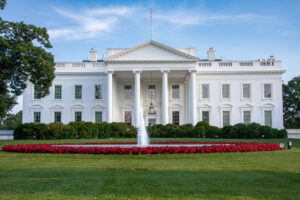Leadership comms that unify the intergenerational workplace
Not every generation has the same communication preferences, but there are ways to bring people together.

Today’s workforce is always in flux — often highly dispersed in many cases (which presents an interesting challenge in itself), it’s also highly stratified by the different demographics. Between Boomers at the higher end of the age scale, Gen Z-ers entering into their first professional roles along with Gen X-ers and Millennials in between, there are gaps in age, experience, and general approach to work between the generations.
However, just because different generations communicate differently doesn’t mean that leaders can’t reach everyone effectively. Through proper audience segmentation and picking the right channels and messaging, you can get through to employees of all generations and keep that all-important authenticity in your voice.
Gaps in digital culture
While it may seem like Gen Z are the new kids on the block, some of them are as old as 27 and have been in the workforce for years now. But getting through to this youngest cohort in the office isn’t always the easiest for communicators who haven’t focused on it previously.
“When comms leaders can put together policies as far as what’s appropriate to communicate in the workplace, people can prioritize better,” said Kristina Markos, internship director for the communications department at Simmons University. Comms should start by considering whether each generation did or didn’t grow up in the digital age. This discrepancy can cause gaps in what digital communication methods each generation engages with.
Markos added that delegating comms to managers also helps bridge the comms gap between generations. This can also make the process of creating employee personas a bit easier.
“Let managers create their own comms policies that work best for their teams, because what’s good for some teams might not be good for others within the organization,” she said. “Building connections like this is really important when you’ve got both digital natives and non-digital natives in the same place.”
Mixing mediums and channels
When you’ve got important executive communications to send to your employees, it’s important that it reaches everyone. But not every type of message will hit its mark with every generation. That’s why it’s worth considering the channels you’re giving your leaders to spread those messages.
Erin Mantz, vice president of employee engagement at Zeno Group, said that communicators should be acutely aware of the organizational demographics and plan accordingly.
“Some employees may prefer social media-esque content, quick videos, digestible bites of information, “ she said. “Others may want an option to read something longer and more detailed.”
This methodology extends not just to C-suite announcements, but to individual interactions leaders have with employees too.
“When it comes to more 1:1 conversations leaders have with their team members, considering the generation – without stereotyping – can help,” Mantz added. “Does a Boomer employee prefer a phone call? Would a Gen Z-er prefer a video chat?”
Leaning on values
Every leader should call back to their organization’s mission and values to guide their communications. For leaders of an intergenerational workforce, that means homing in on how those values are applied and relating them to each cohort.
Joni Nelson, senior manager of CEO and leadership communications at Northrop Grumman, said that a company’s values are most impactful when they are repeated and present in every touchpoint from leadership, whether it’s a town hall or an email. This fosters a sense of belonging under one banner of values that can help fuel innovation, which is especially valuable for multigenerational communication.
“We want to create a culture where people feel safe and feel that their ideas are important,” she said. “Leading from the top means rearticulating those values at every turn because that’s what builds a culture that everyone can contribute to.”
Intentionality in building bridges
You can’t cater every single message from your leaders to every single generation or individual in your workplace. And that’s totally alright — this provides the opportunity for more experienced people in the organization to show younger folks the ropes through mentorship.
Mentorship can also help employees of different generations find common ground, and the learning process can go both ways, right up to leadership.
“I think that younger folks can help non-digital natives that have a more old-school philosophy understand the value of flexibility and fluid communication,” Markos said. “That can also include speaking up about your emotions and your boundaries.”
She added that great leadership communications all come down to connection, no matter the generation it’s intended for.
“Leaders need to get in the weeds and figure out the processes going on. Encouraging exploration and targeted questions can really help bridge gaps.”
Sean Devlin is an editor at Ragan Communications. In his spare time he enjoys Philly sports and hosting trivia.







